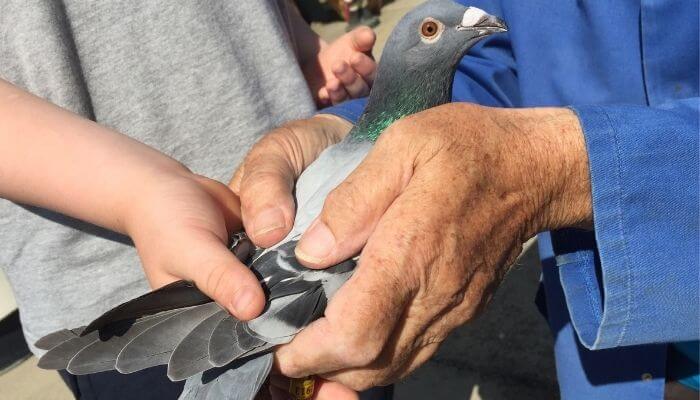Finding a racing pigeon is an unusual event. If you have found one, it generally means that there’s something wrong with the bird.
Unless there are any signs of injury then the pigeon may just need a rest, if that is the case offer them some food and water and before long they will take off.

If they are injured the pigeon may have a tag (if it is a racing pigeon) which gives you their organization’s contact details so get in touch with them and let them know where their pigeon is and what has happened to it.
Reasons You May Find A Racing Pigeon
Extreme weather conditions may have exhausted a pigeon on its flight.
As nobody really knows how their instinctive navigational skills actually work, they could get lost during a storm when visibility is almost nil.
Heavy fog would presumably play havoc with their visual skills.
Very high or gusting winds up to gale force may make them descend to the ground to take shelter.
Battling headwinds hour after hour will tire them out.
If the pigeon isn’t just tired, then it is probably suffering from an illness or has been injured in some way.
If a pigeon allows you to approach and pick it up, then there’s definitely something wrong and it is likely they are injured in some way.
Reading The Pigeon Tag
If a pigeon has a ring on its leg then it probably belongs to someone and most likely is a racing pigeon.
A pigeons tag gives you information about the owner and how that person can be contacted.

Pigeon banding gives pigeons a unique numbered code that identifies that individual bird, a date, which is the year that the pigeon was hatched and the initials of the pigeon organization to which the owner belongs.
Most of these pigeons are born and bred in captivity and don’t have the honed survival skills of racing and feral of pigeons, so it is better not to release them and wait for the owner to contact you.
Simply get in touch with the organization and they will be able to alert the pigeon’s owner.
However, be aware that ornithological organizations ring pigeons for scientific purposes.
They tag feral pigeons in authorized campaigns to study the movements of pigeons and gain insight into their habits.
So just because a pigeon has a tag on this does not mean it is definitely owned by someone.
